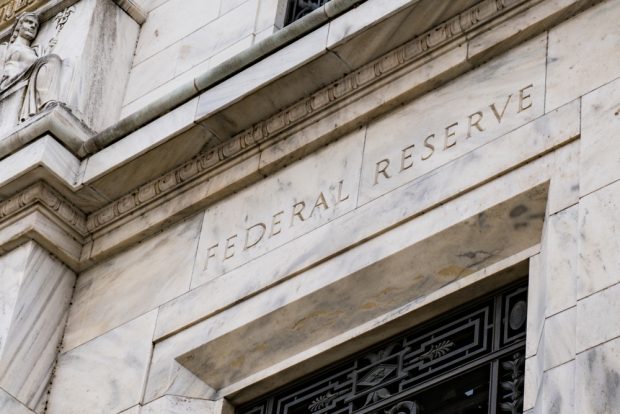 Federal Reserve Building in Washington, D.C. (Source: Shutterstock)
Federal Reserve Building in Washington, D.C. (Source: Shutterstock)
The Federal Open Market Committee announced Wednesday it was raising rates by 75 basis points with more rate pain to come.
Wednesday's increase by the Federal Open Market Committee brought the Fed's target range to 3% to 3.25%. Projections released by the FOMC showed most members expect rates to reach 4.4% by the end of this year and 4.6% by the end of 2023.
Recommended For You
NAFCU Chief Economist Curt Long said the Fed indicated that rates are now potentially in restrictive territory.
"That adds to the impression that the FOMC is not done raising rates by a long shot," Long said. "Credit unions should prepare for a mild recession in 2023, at minimum."
Long said most FOMC members expect the unemployment rate to top out at 4.4% in 2023 and remain there the following year before declining somewhat in 2025.
"That outcome would either avoid a recession or constitute a very mild one, but the risks are all weighted to the downside," Long said. "For it to be realized, the Fed would need to properly identify the turning point at which it can safely ease its foot off the brake and to do so with the proper weight."
Mike Fratantoni, chief economist for the Mortgage Bankers Association, said the increase raises the federal funds rate to 3%.
"The rate is now above what most FOMC members consider to be the long-term level and should be effective in reducing demand and slowing inflation over time," Fratantoni said.
 Mike Fratantoni
Mike Fratantoni "The FOMC members' projections indicate slower growth, slowly decelerating inflation and a Fed funds rate that will likely top out well above 4%," Fratantoni said. "The surprise for the market might be the median expectation that they could increase rates to 4.4% by the end of this year."
At a news conference, Fed Chair Jerome Powell said the Fed will continue raising rates to a restrictive level until inflation falls back to its 2% long-term target.
He warned that history has shown backing off a restrictive policy prematurely has caused harm to the economy.
"Restoring price stability will likely require maintaining a restrictive policy stance for some time," he said.
"We will keep at it until the job is done," Powell said. "Over the coming months we will be looking for compelling evidence that inflation is moving down, consistent with inflation returning to 2%."
Most FOMC members said they expect the U.S. economy to grow only 0.2% this year and 1.2% next year. "That's very slow growth and it could give way to higher unemployment," Powell said.
Also on Wednesday, the National Association of Realtors announced that existing homes in August fell for the seventh month in a row. Homes sold at a seasonally adjusted annual rate of 4.8 million, down 0.4% from July and down 19.9% from a year ago. The median existing-home sales price rose 7.7% from one year ago to $389,500.
"The housing sector is the most sensitive to and experiences the most immediate impacts from the Federal Reserve's interest rate policy changes," NAR Chief Economist Lawrence Yun said. "The softness in home sales reflects this year's escalating mortgage rates. Nonetheless, homeowners are doing well with near nonexistent distressed property sales and home prices still higher than a year ago."
NAFCU's Long said the July-to-August drop in existing home sales was the smallest over the past seven months.
"Inflation and Fed rate hikes have pushed mortgage rates to more than 6%, sidelining many potential buyers," Long said. "However, supply remains extremely tight, which is supporting current price levels."
Long said he expects home sales "to settle near the current, lower level over the near term as mortgage rates prevent improvement but a strong labor market and resilient demand prevents further decline."
 Curt Long
Curt Long Joel Kan, the MBA's assistant vice president of economic and industry forecasting, said applications for residential first mortgages in the week ending Sept. 16 were 3.8% higher than the previous week after seasonal adjustments. The average contract interest rate for 30-year fixed-rate mortgages was 6.25% on Sept. 16, up from 6.01% a week earlier and 3.03% a year earlier.
 Joel Kan
Joel Kan "As with the swings in rates and other uncertainties around the housing market and broader economy, mortgage applications increased for the first time in six weeks but remained well below last year's levels, with purchase applications 30% lower and refinance activity down 83%," Kan said.
© Touchpoint Markets, All Rights Reserved. Request academic re-use from www.copyright.com. All other uses, submit a request to [email protected]. For more inforrmation visit Asset & Logo Licensing.







